Use the code AH30 for an additional 30% off the new, lower priced plans from Nutrisense
I’m currently on my third round of using a continuous glucose monitor (CGM) for monitoring my blood sugar. I like to do a one month plan every so often to gain insight into how the foods I’m eating, how I’m sleeping, my exercise routine, and stress levels are affecting my blood sugar. Blood sugar is so often thought of only as being an issue for diabetics, but more and more research is showing how it might play a role in many health afflictions from Alzheimer’s to heart disease, kidney disease, and more. While A1C is helpful to see how your blood sugar looks over an extended period, a CGM gives you immediate feedback as to how your actions impact your blood sugar, allowing you to easily tweak your habits and achieve more optimal health.
This is my third time using Nutrisense, but my first time with their new CGM device, Stelo. It was easy to put on, though that same initial “pop!” when it inserts the monitor still made me jump. It didn’t hurt and contrary to popular concern, while the device does use a tiny needle to attach the monitor, it does not stay in your skin; it leaves behind a tiny filament that tracks your blood glucose.
I’m happy to answer any questions you have about the nitty gritty, but today I wanted to focus in on the results, what it looks like in action. To do so, I recorded a three day diary of what I ate and when, and you’ll see the results on the screenshot from the Nutrisense app, which makes it easy to interpret the results. Note: it can take 24 hours to calibrate properly, so I waited 48 hours before I started my food diary. So here we go!
How Food Impacts Blood Sugar: A Three Day Diary
Day 1
- 6:30 AM 1/3 caffeine coffee and a splash of half and half
- 8:25 AM Plain Greek yogurt, grain-free granola, chia seeds, half a banana, two fried eggs
- 10:30 AM Salad with romaine, carrots, radish, cucumber, sprouts, chicken, hemp seeds
- 11:55 AM Half a child’s leftover peanut butter and honey sandwich on a hamburger bun
- 3:30 PM Apple then a string cheese
- 5:25 PM Spaghetti (eaten in the car so in a 16oz Thermos, but it was half filled with spaghetti and half filled with my favorite meat sauce)
Day 2
- 6:45 AM Coffee with a splash of half and half
- 8:30 AM Sourdough (not my best loaf; my starter wasn’t bubbly enough) and butter
- 8:37 AM Plain Greek yogurt, chia seeds, grain-free granola, strawberries, fried egg
- 12:00 PM Cheese stick then an apple
- 2:15 PM Salad then pimento cheese and pretzels
- 8:10 PM Salsa chicken with bone broth rice, guacamole, salsa, chips, and jalapenos
Day 3
- 6:45 AM Coffee with a splash of half and half
- 8:01 AM Plain Greek yogurt, chia seeds, grain-free granola, half a banana, strawberries, two fried eggs
- 12:00 PM Salad with a can of tuna fish (no dressing because the bottle was actually empty and I didn’t realize it until we were at co-op) and a bag of jalapeno chips
- 2:20 PM Turkey and cheddar on sourdough
- 3:00 PM 1/3 a Lemon Lime Poppi Soda
- 6:30 PM Cava salad bowl
CGM Diary Takeaways
- The order in which you eat food really does make a difference. Eating the apple then the cheese stick made my blood sugar spike an additional 10 points versus eating the cheese stick first, then the apple.
- My body tolerates carbs (spaghetti, sourdough bread, chips) well when paired with adequate protein and fat.
- I drank the Poppi because I wanted a mental afternoon pick me up but stopped at 1/3 because I wasn’t really enjoying the flavor. The whole can has 5g of sugar in it and I had it on an empty stomach, and 1/3 of it spiked my blood sugar out of the green zone, which wasn’t super surprising, but I feel like it took a while to recover and then was harder to stabilize in general afterwards. I could physically feel the crash afterwards in my mood and my hunger levels. I think this shows how unstable blood sugar leads to making worse choices. IE: a crash made me feel moody and hungry.
- Cortisol and adrenaline also impact blood sugar. I had my allergy shot on day 2 (at 3:10- so you can see the response) and I could see my blood sugar rise in response to the severe localized swelling that I experienced (allergy shot update to happen in a different blog post; I used to sing it’s praises but now am changing my tune).
- I feel really confident in my ability to keep my blood sugar stabilized, so I have to force myself to not just “play the game” when I’m wearing the CGM. It’s a great time to experiment and while it’s tempting for me to eat in the way I know will keep my blood sugar stabile, I want to use this as a time to get data on items I’m less sure on- will sourdough spike my blood sugar? Will eating rice that’s been cooked, then cooled, then reheating really lessen the glycemic response? What about a glass of wine versus a martini?
- I wish I would have had access to this kind of information a decade ago. I have a history of troublesome blood sugar: 20 years ago I’d keep a granola bar next to my bed to eat first thing upon waking to avoid feeling sick and dizzy from tanking blood sugar, I had PCOS and my cycles were all over the place, I passed out in the doctor’s office when I had to take my gestational diabetes test while pregnant with Hailey. Since then, I’ve learned so much and have implemented the changes necessary to achieve the stable blood sugar I desire. The things I believe have helped the most: strength training (building muscle), understanding macros and food pairings, and focusing on quality sleep.
I could talk about the importance of blood sugar and best strategies all day long. The Glucose Goddess is a popular resource for all things blood sugar; you can find her book here. I started years ago with Mark Hyman’s blood sugar book and highly recommend it as well. If you have any questions about the CGM or my experience, please ask away. Happy to chat about all things blood sugar anytime 🙂
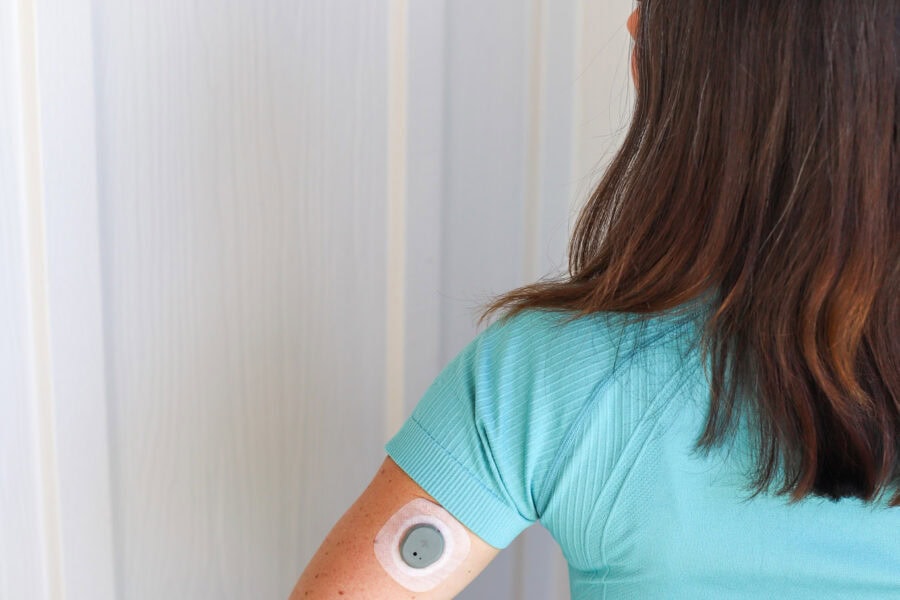
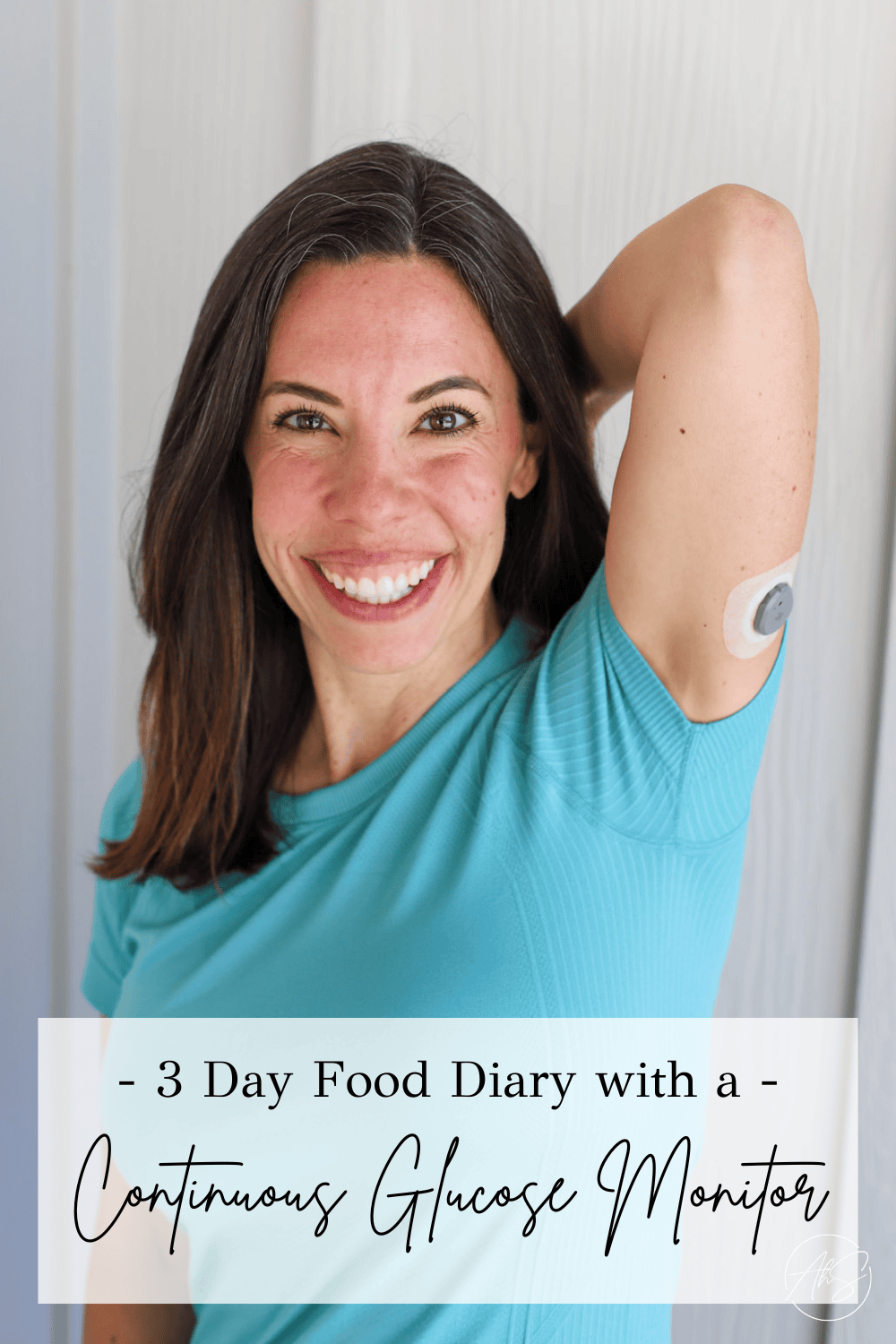
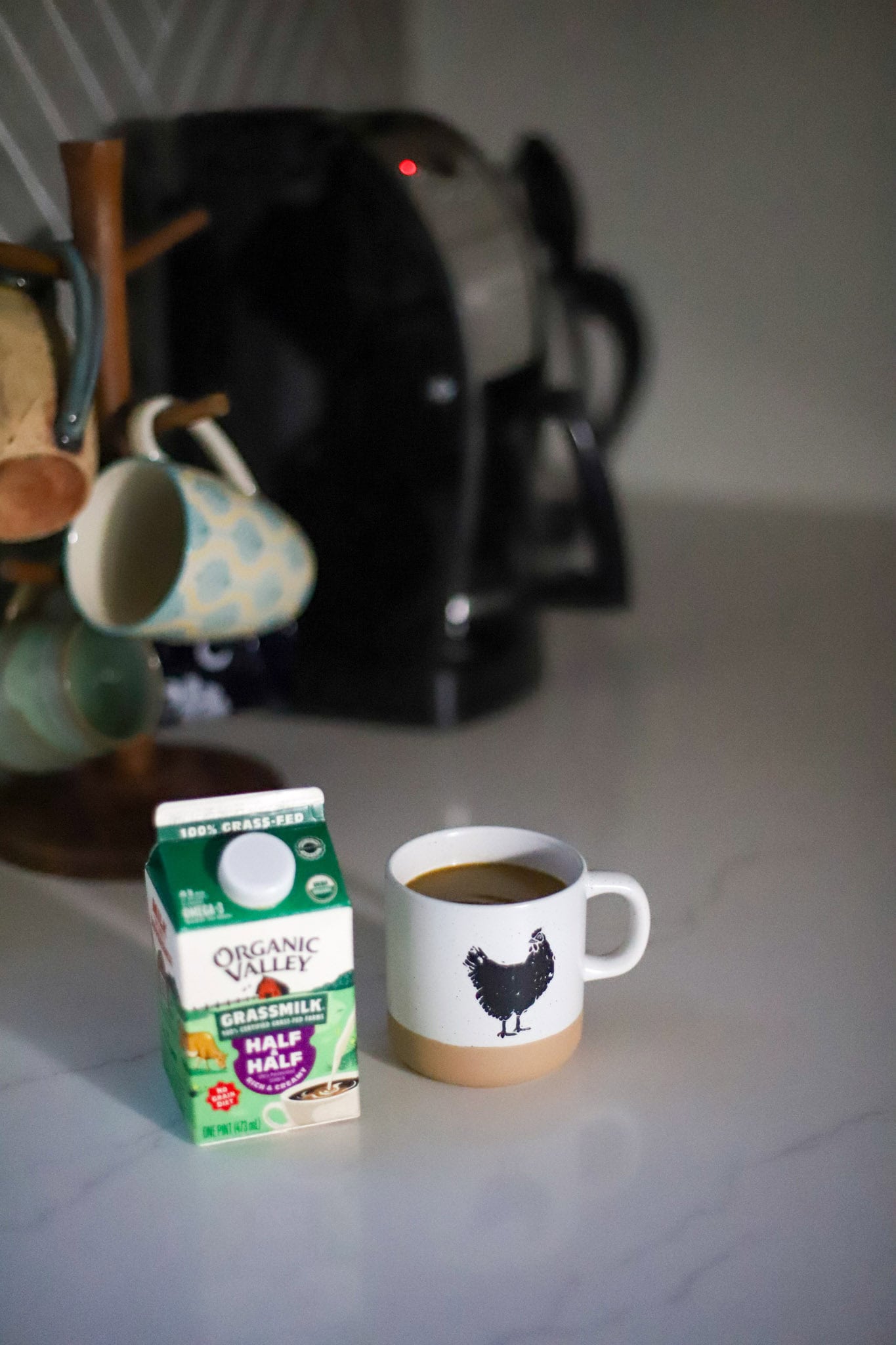

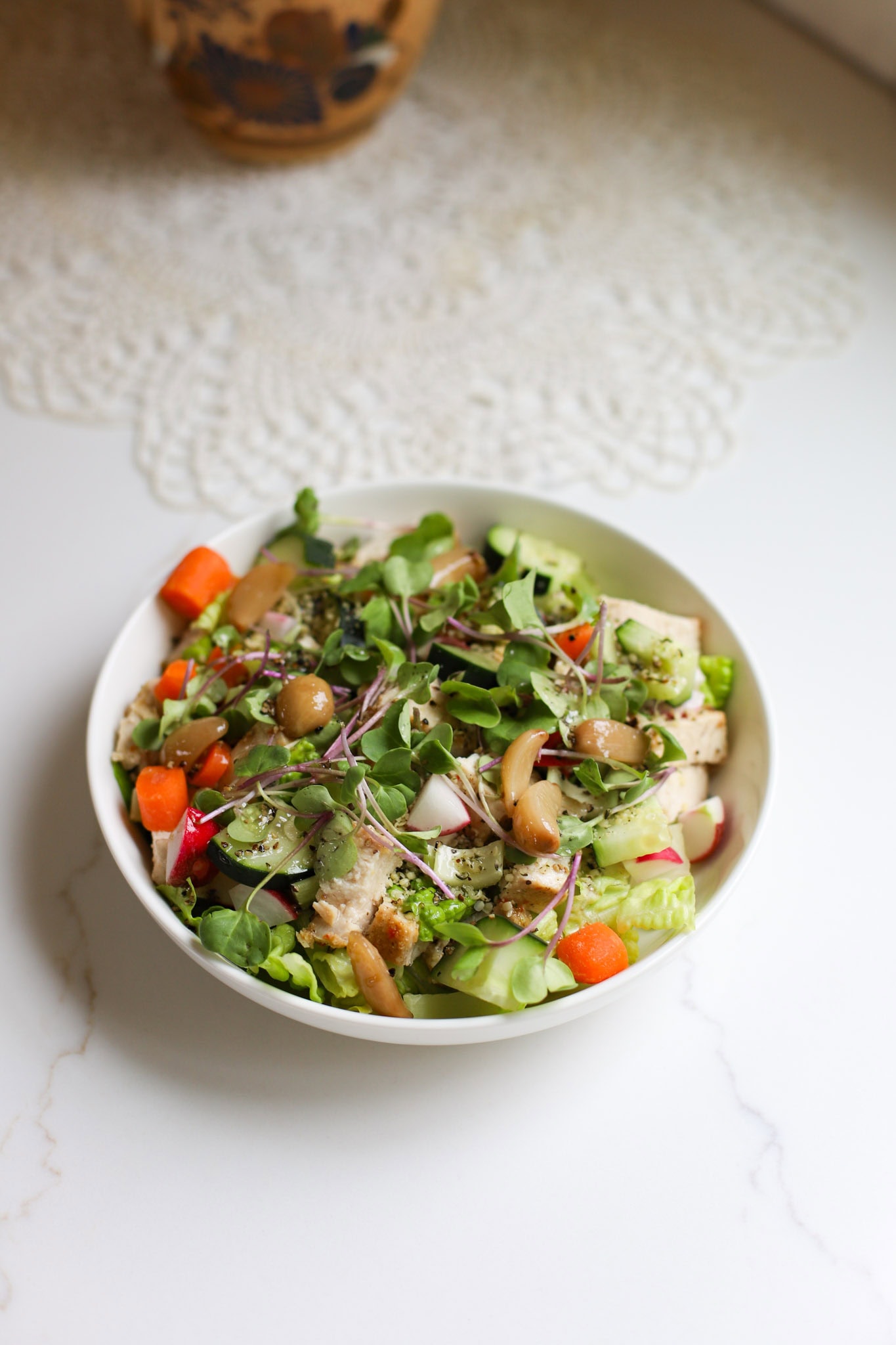
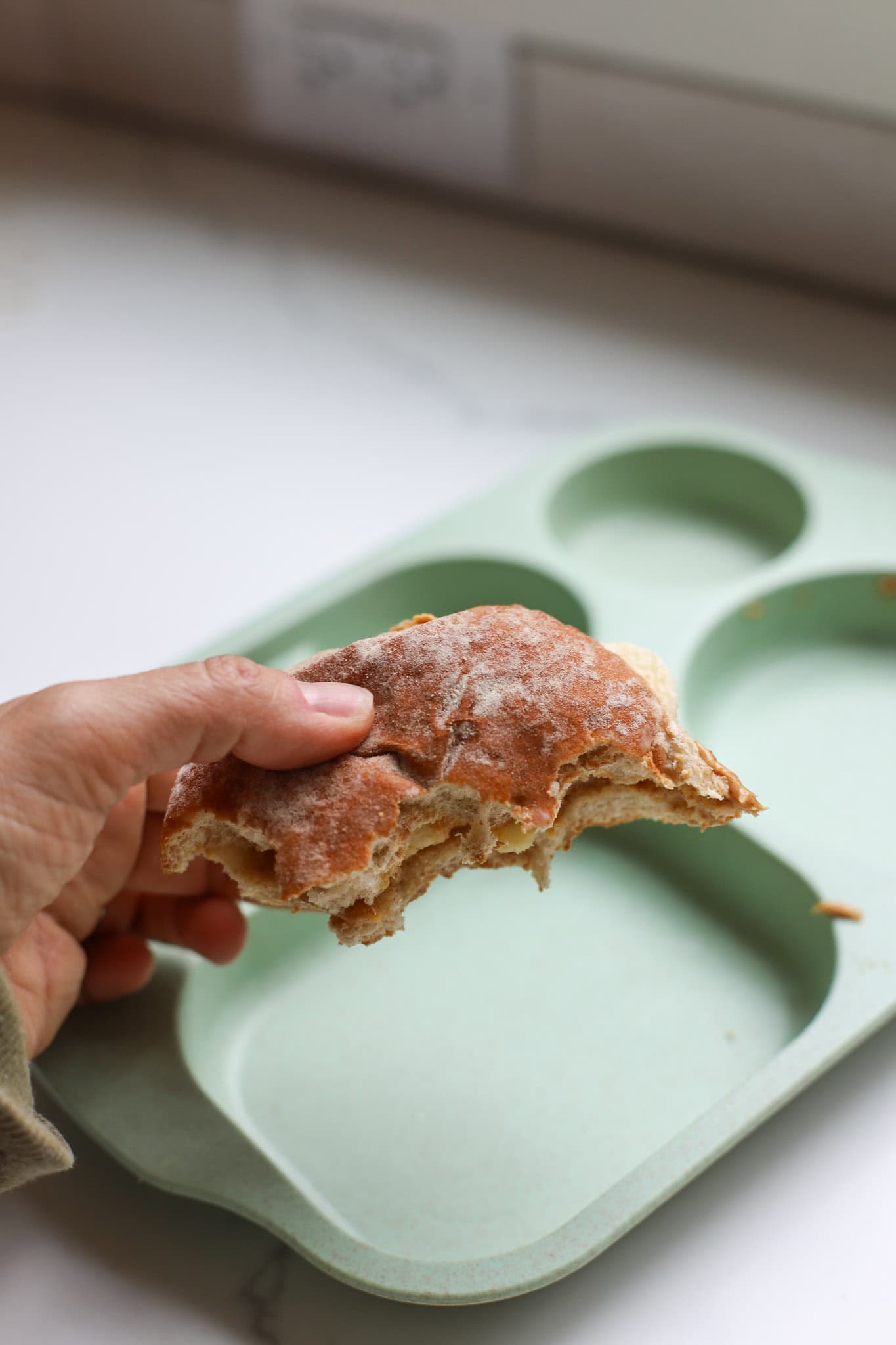
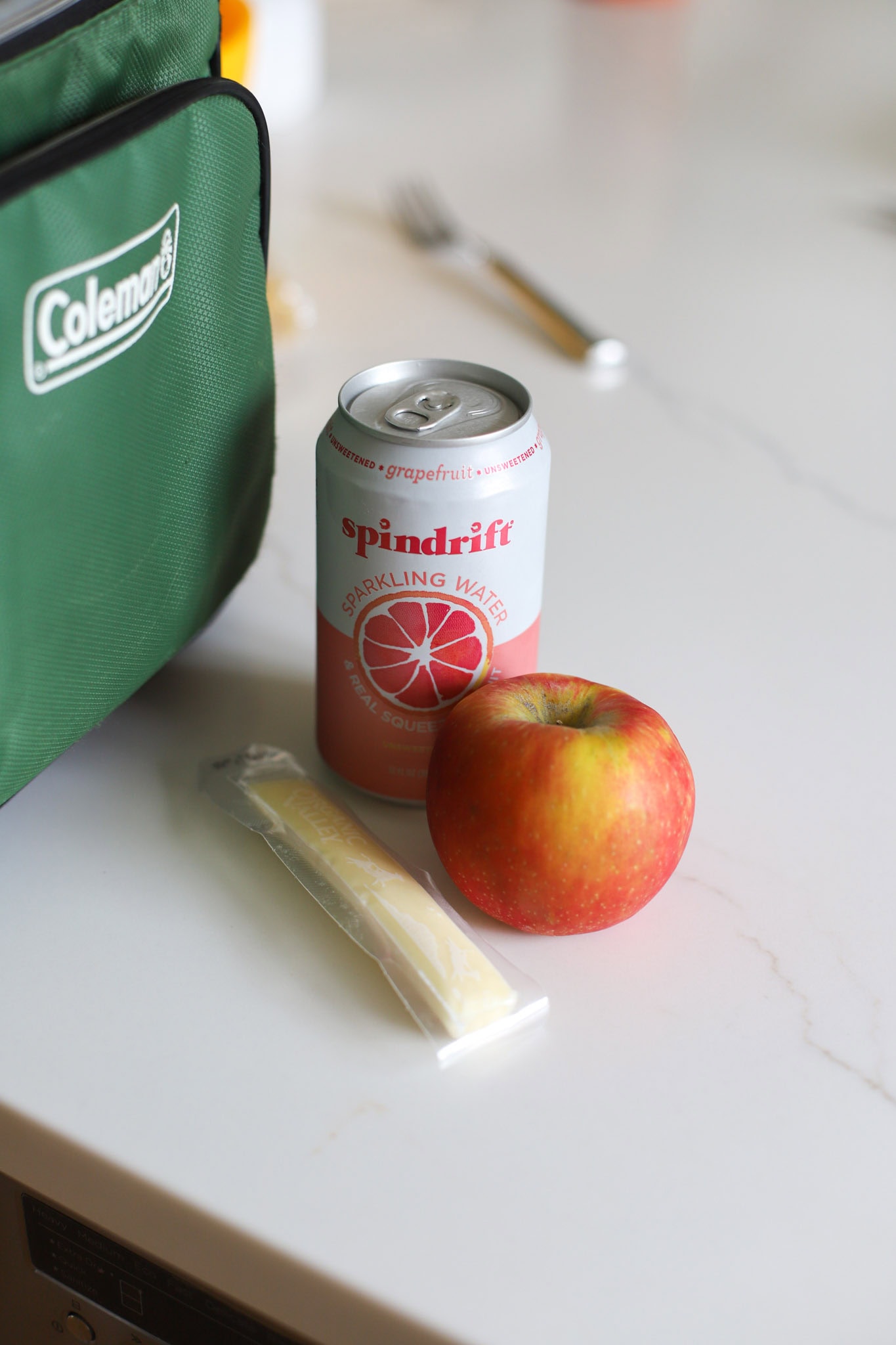
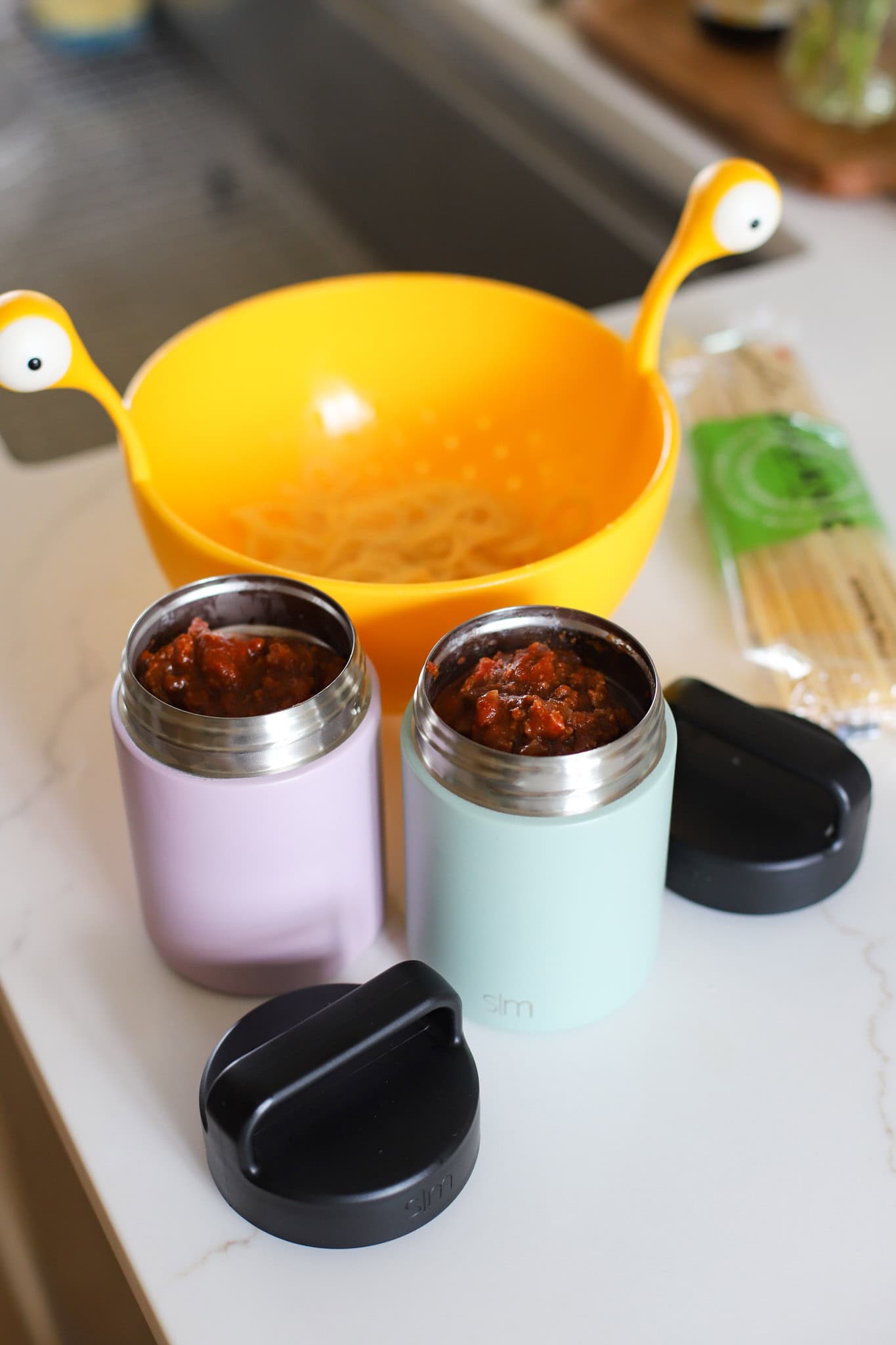
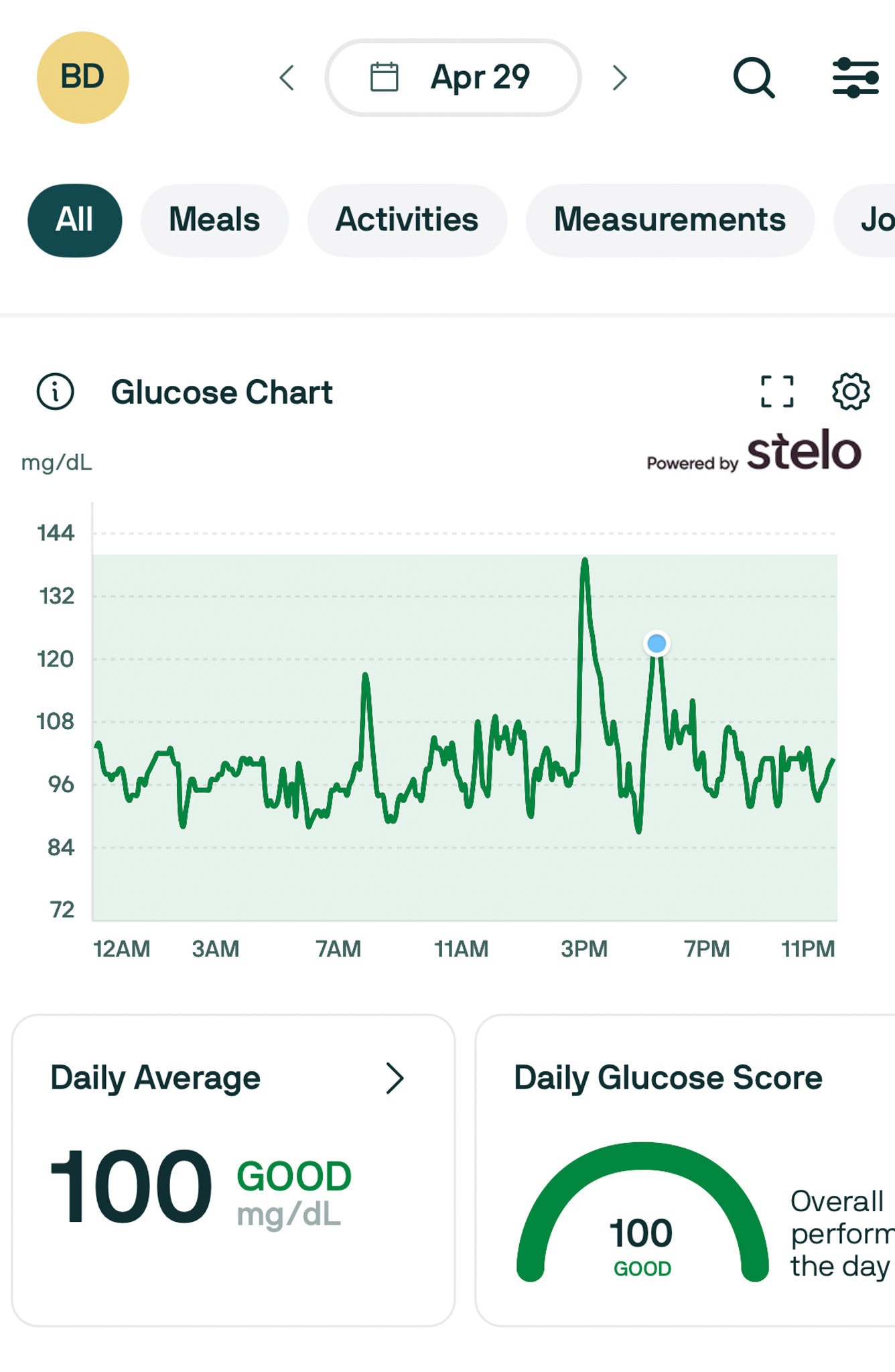
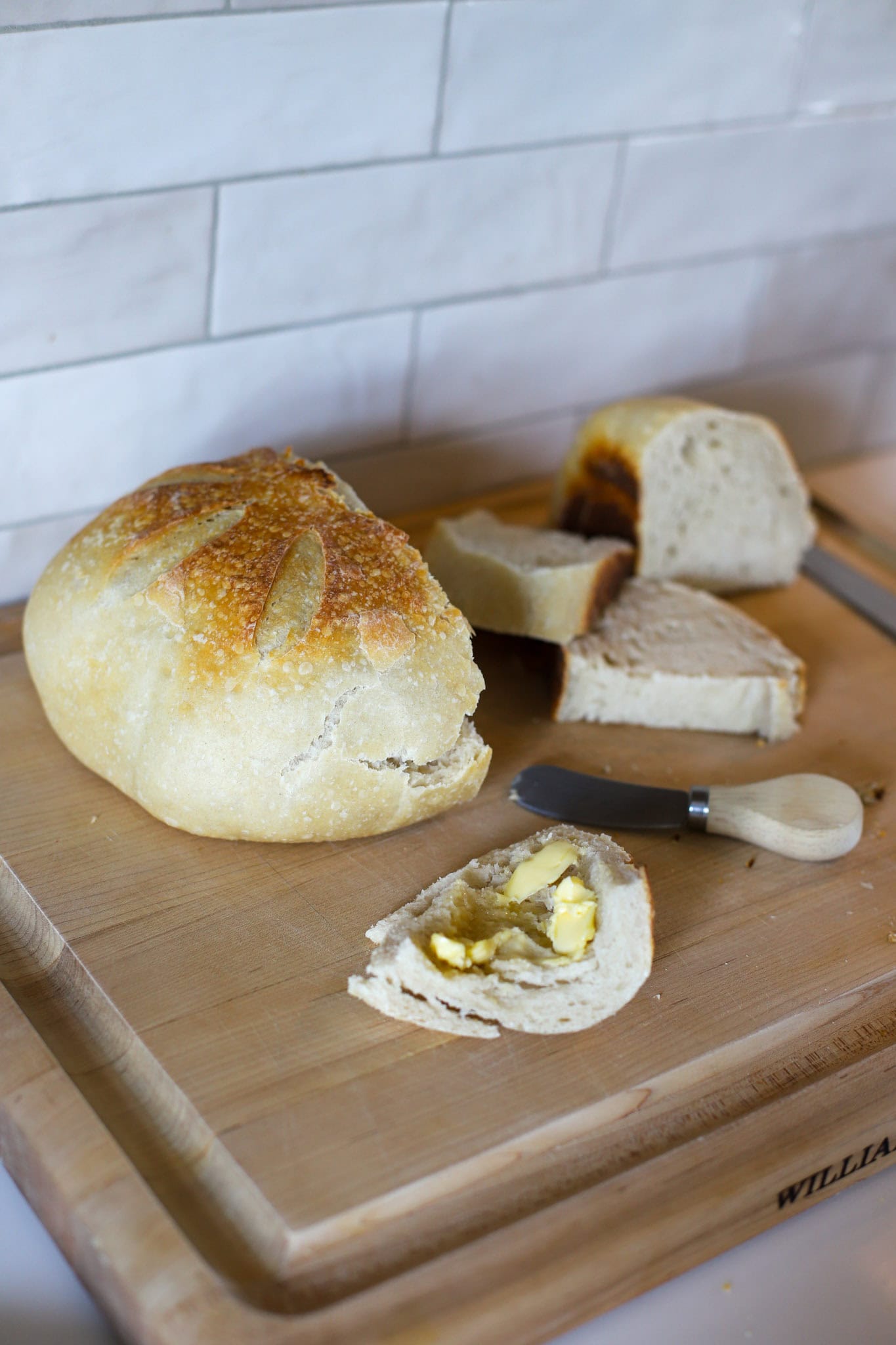
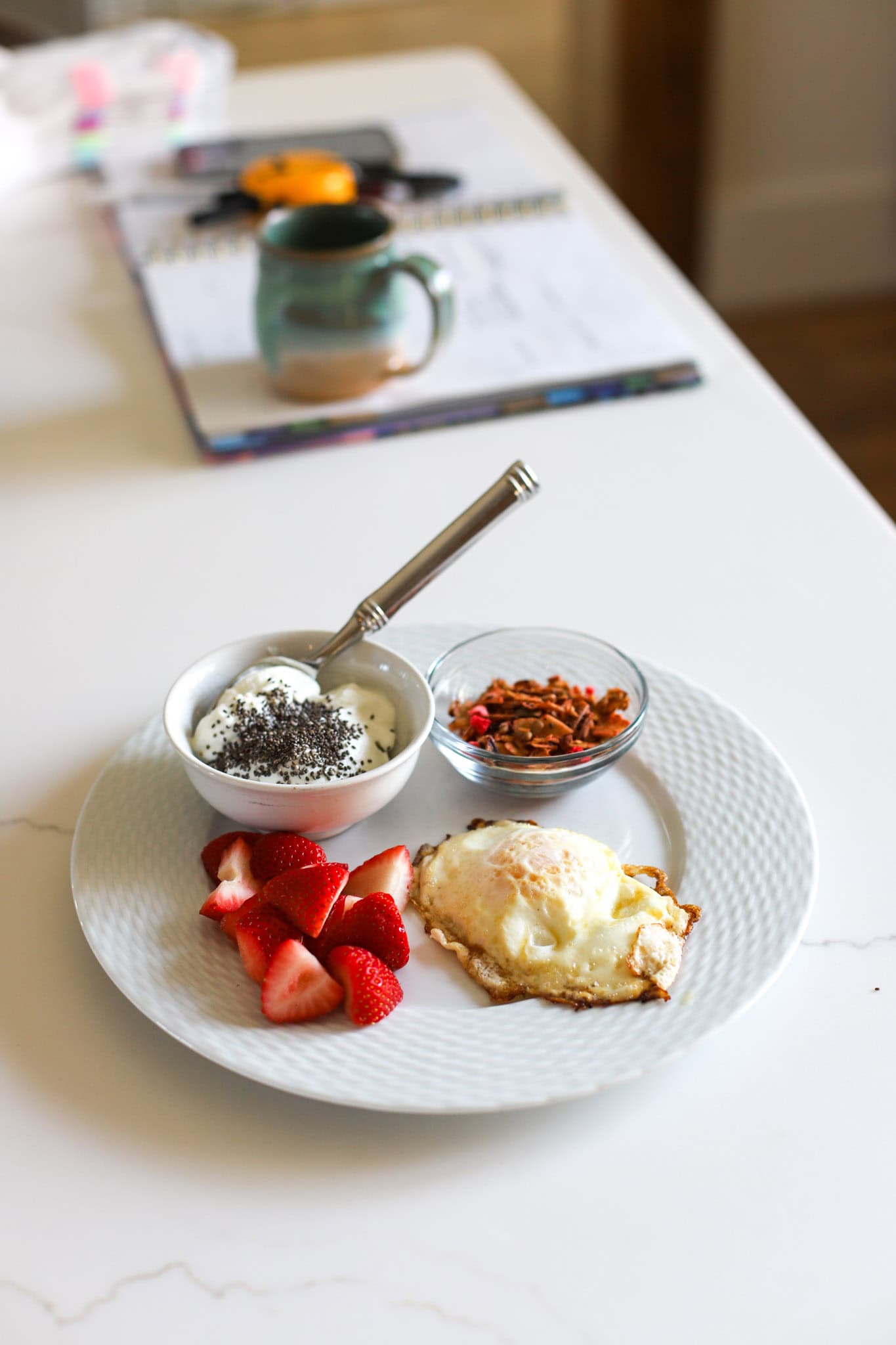
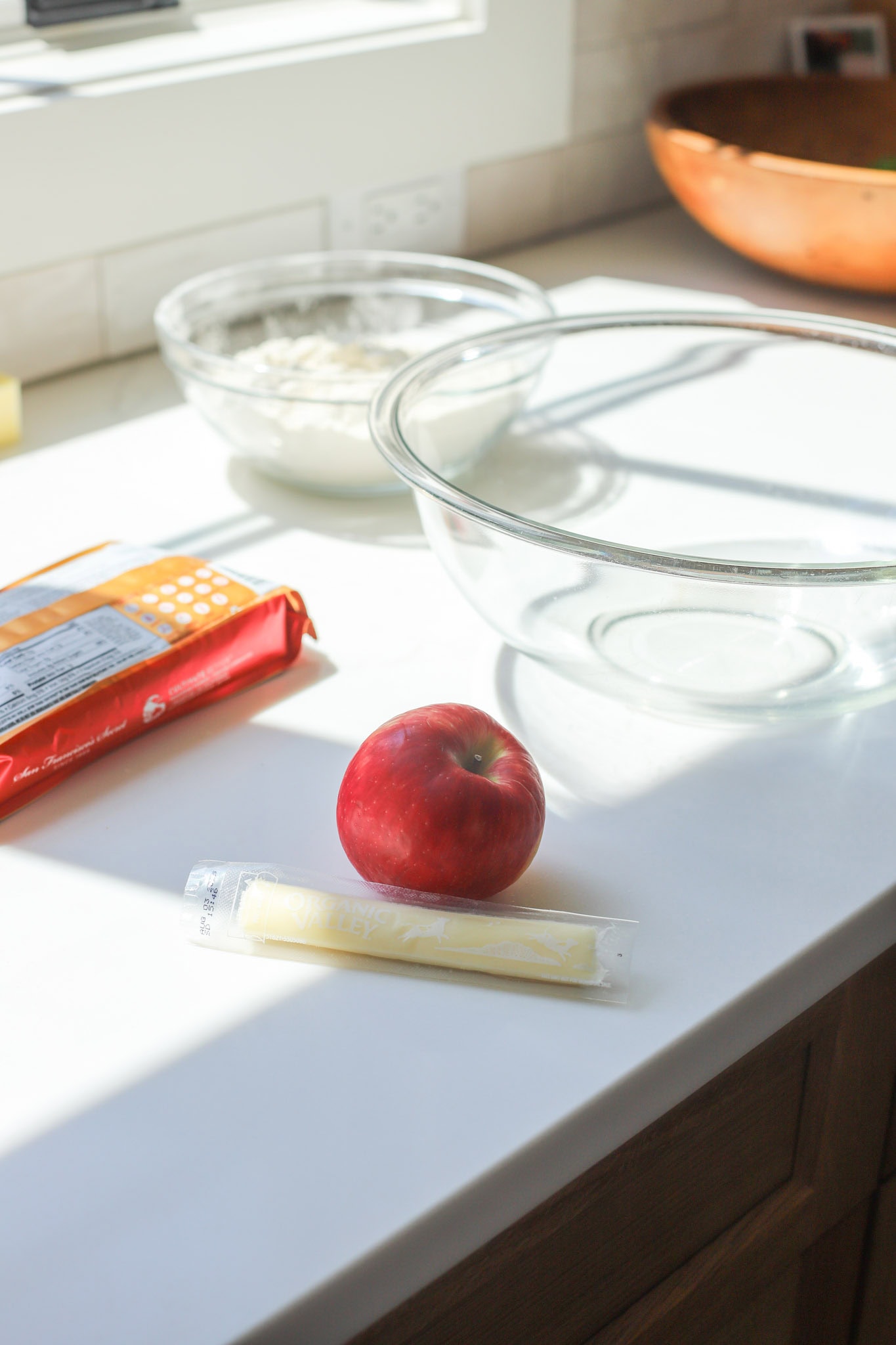
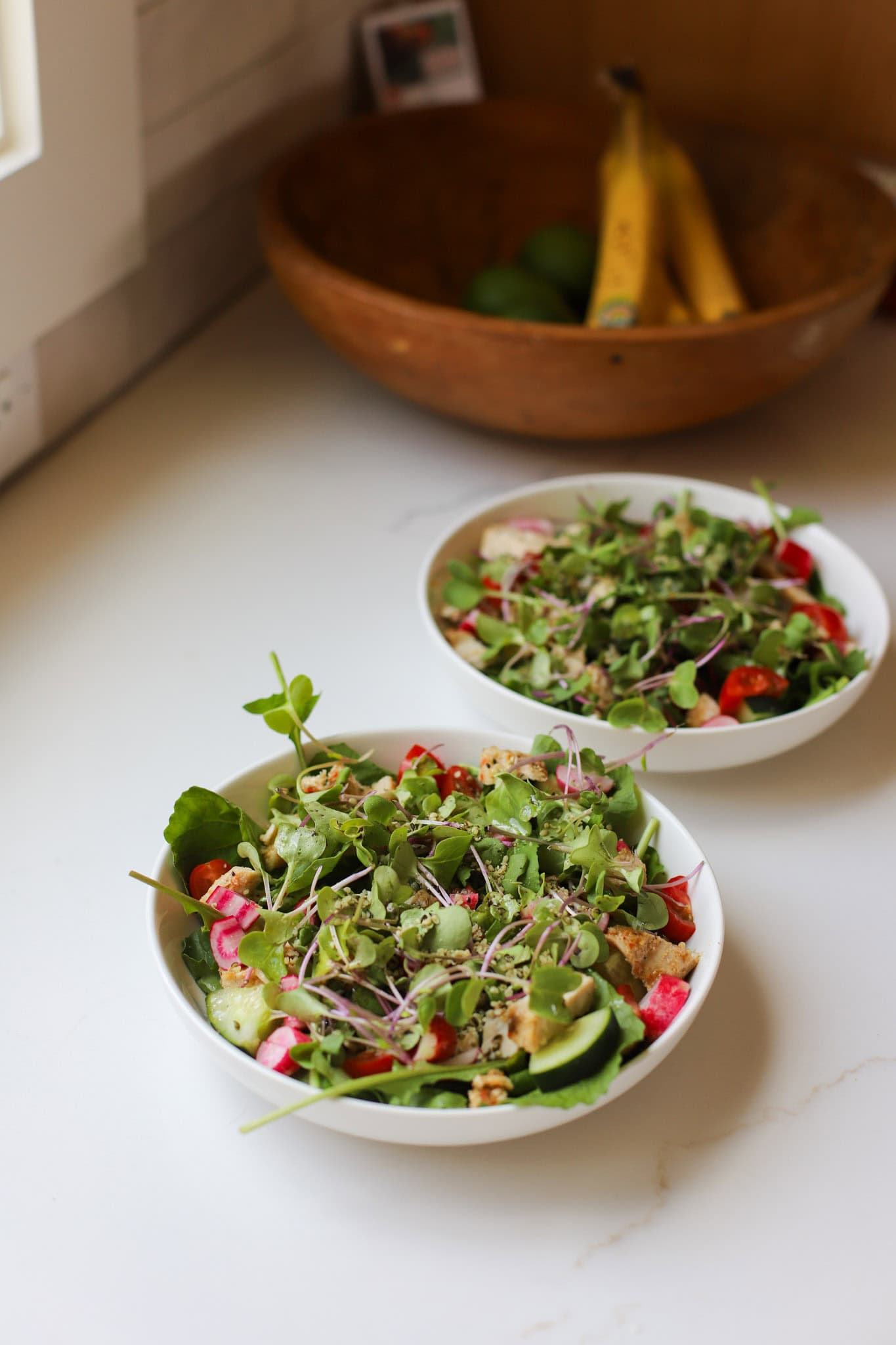
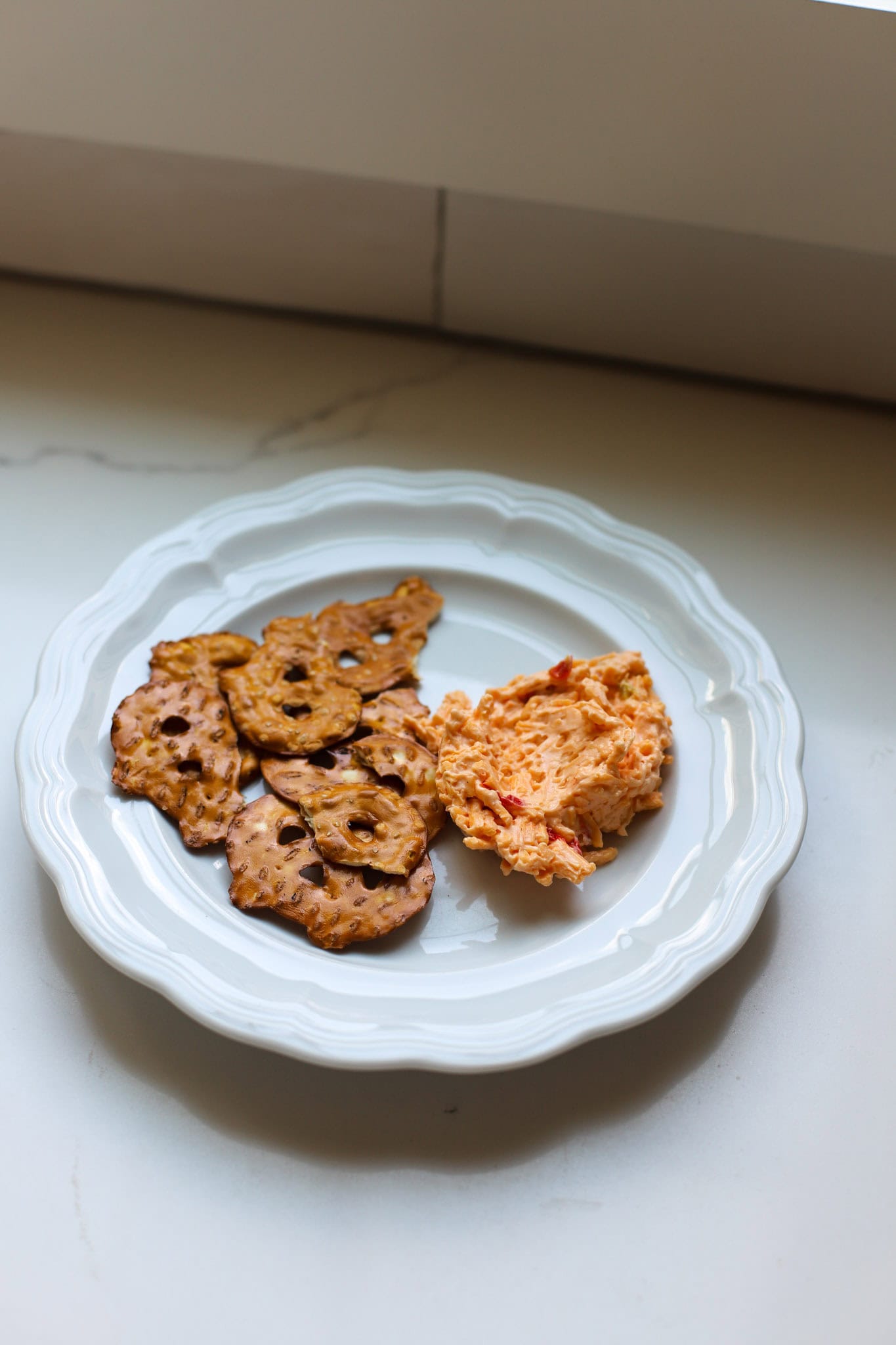
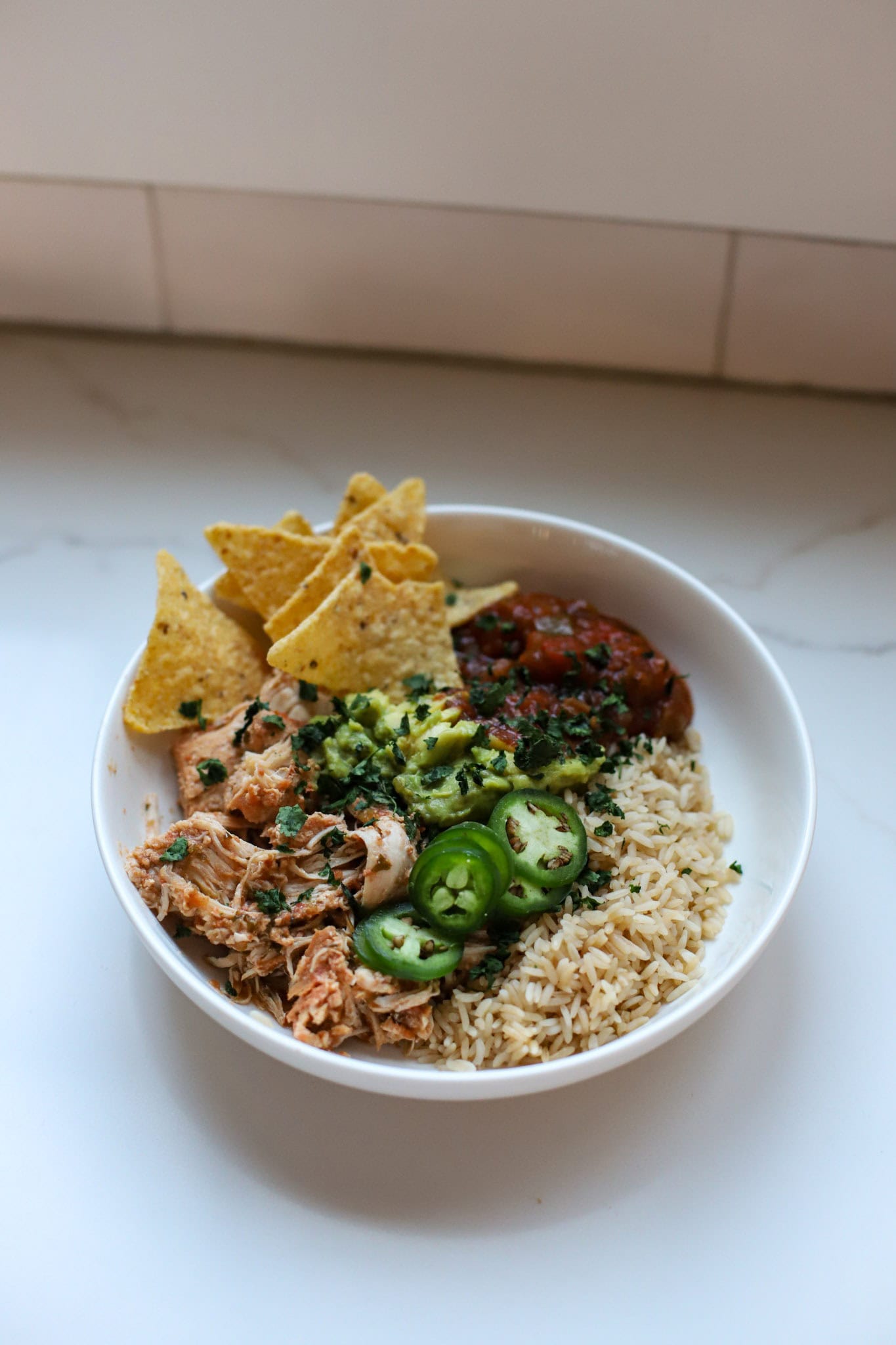
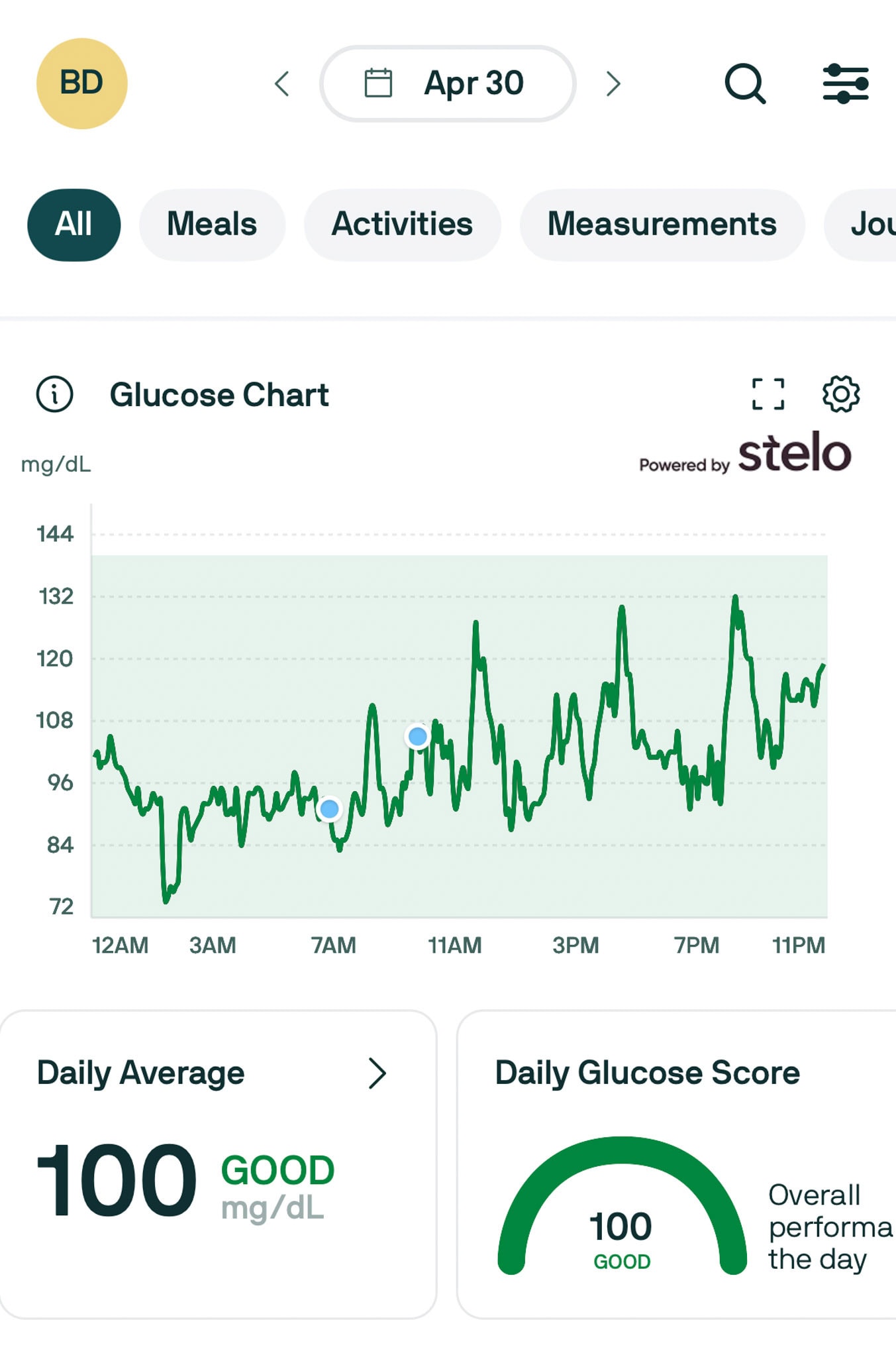
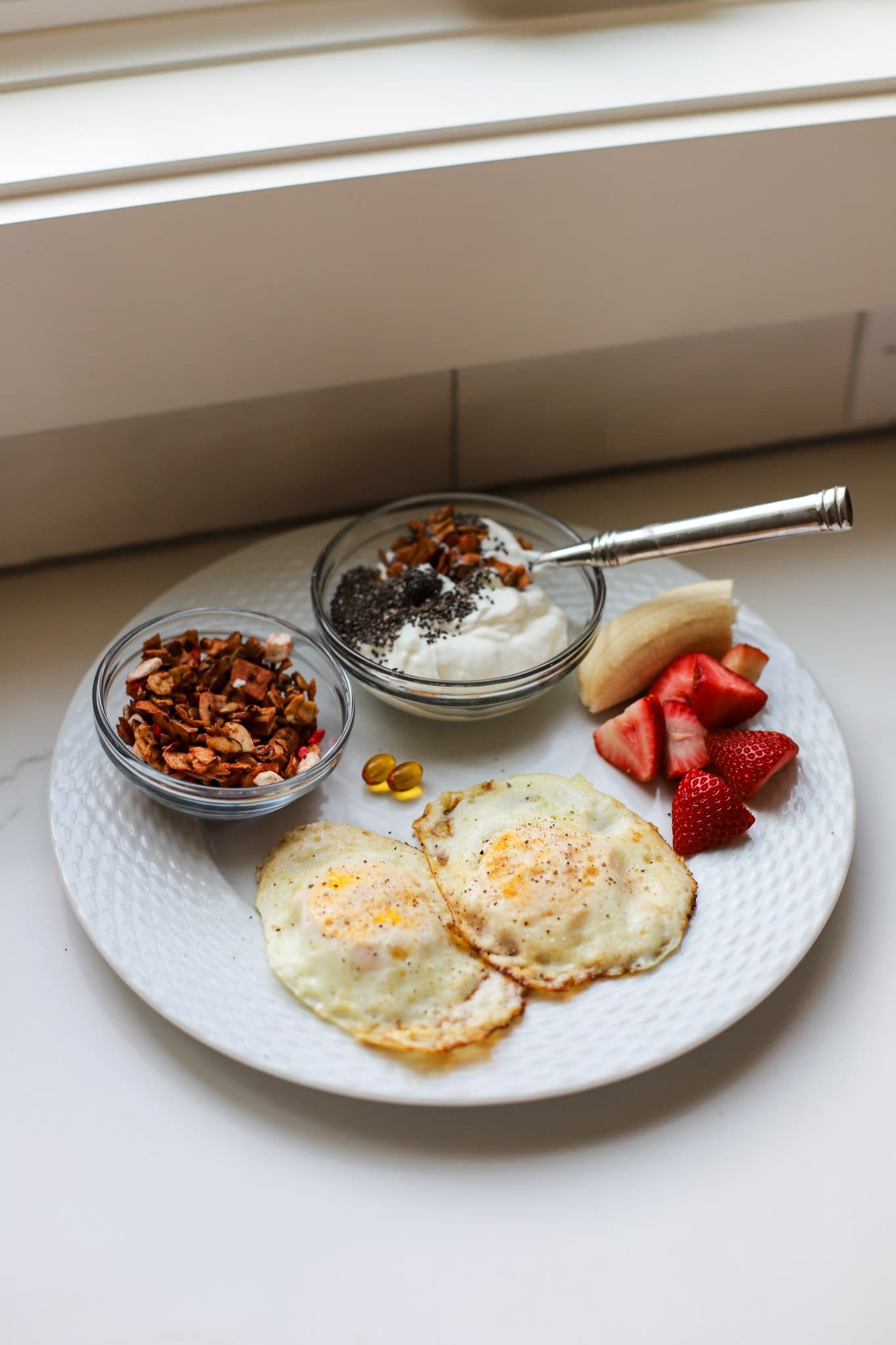

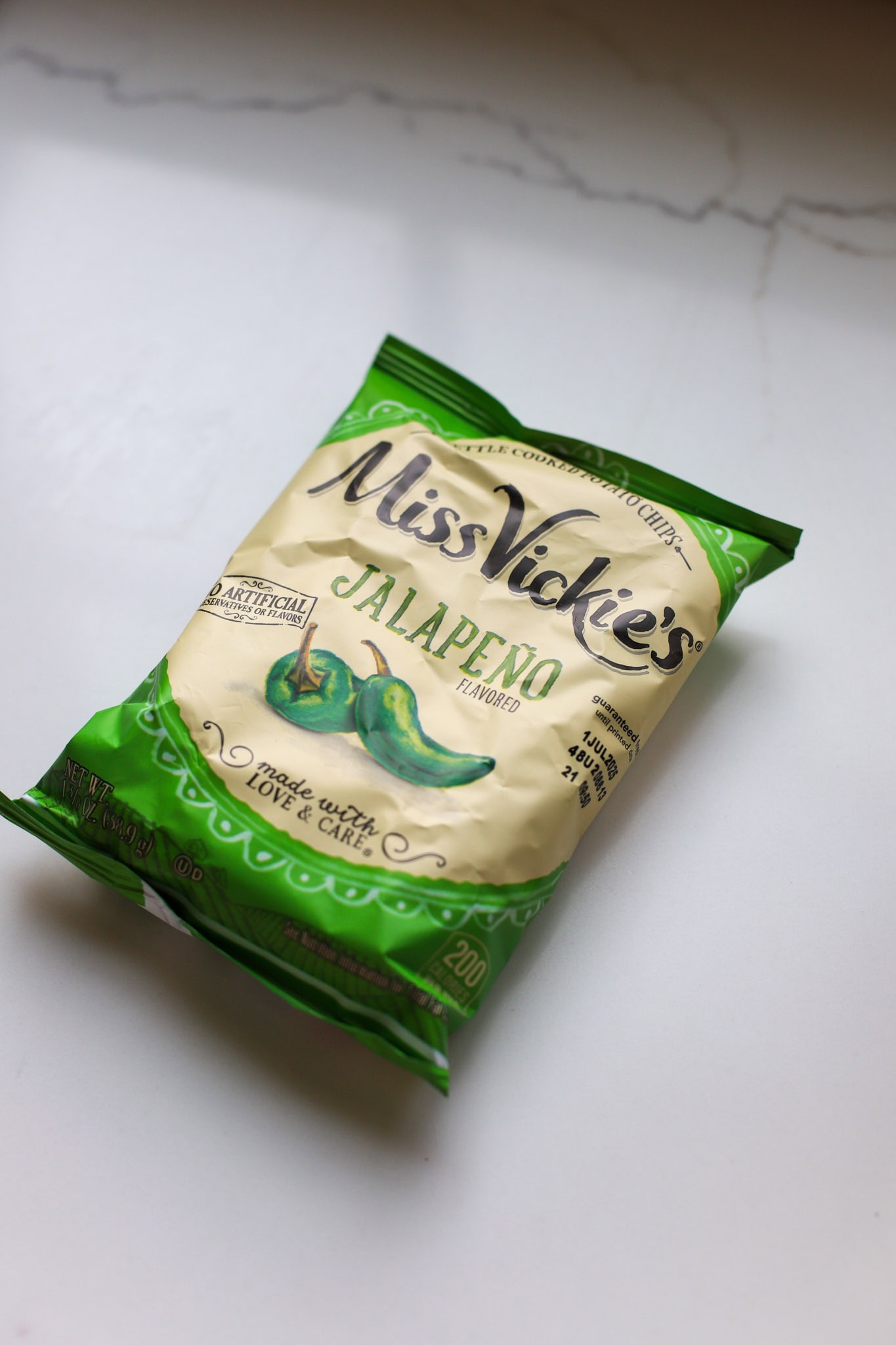

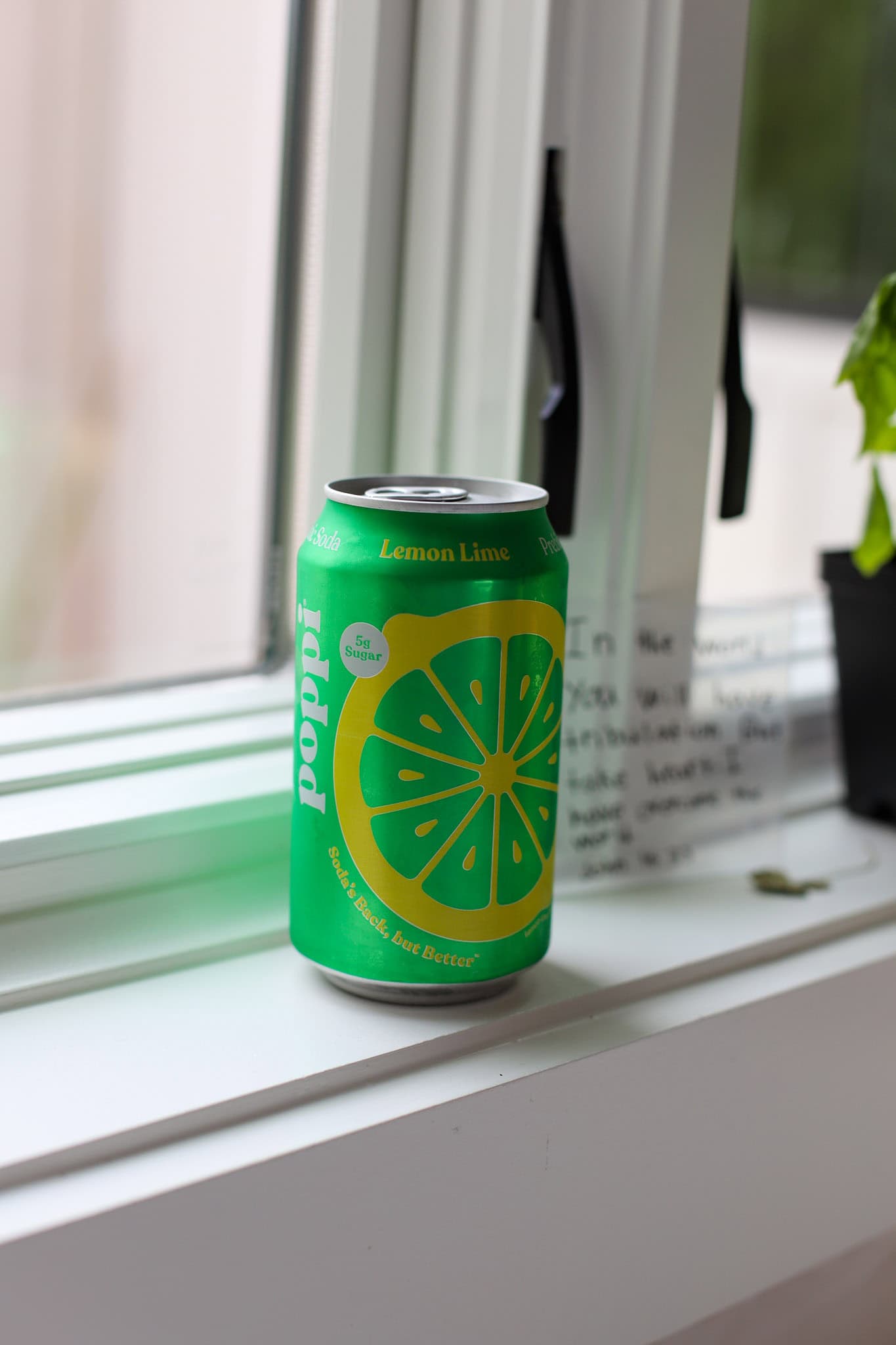
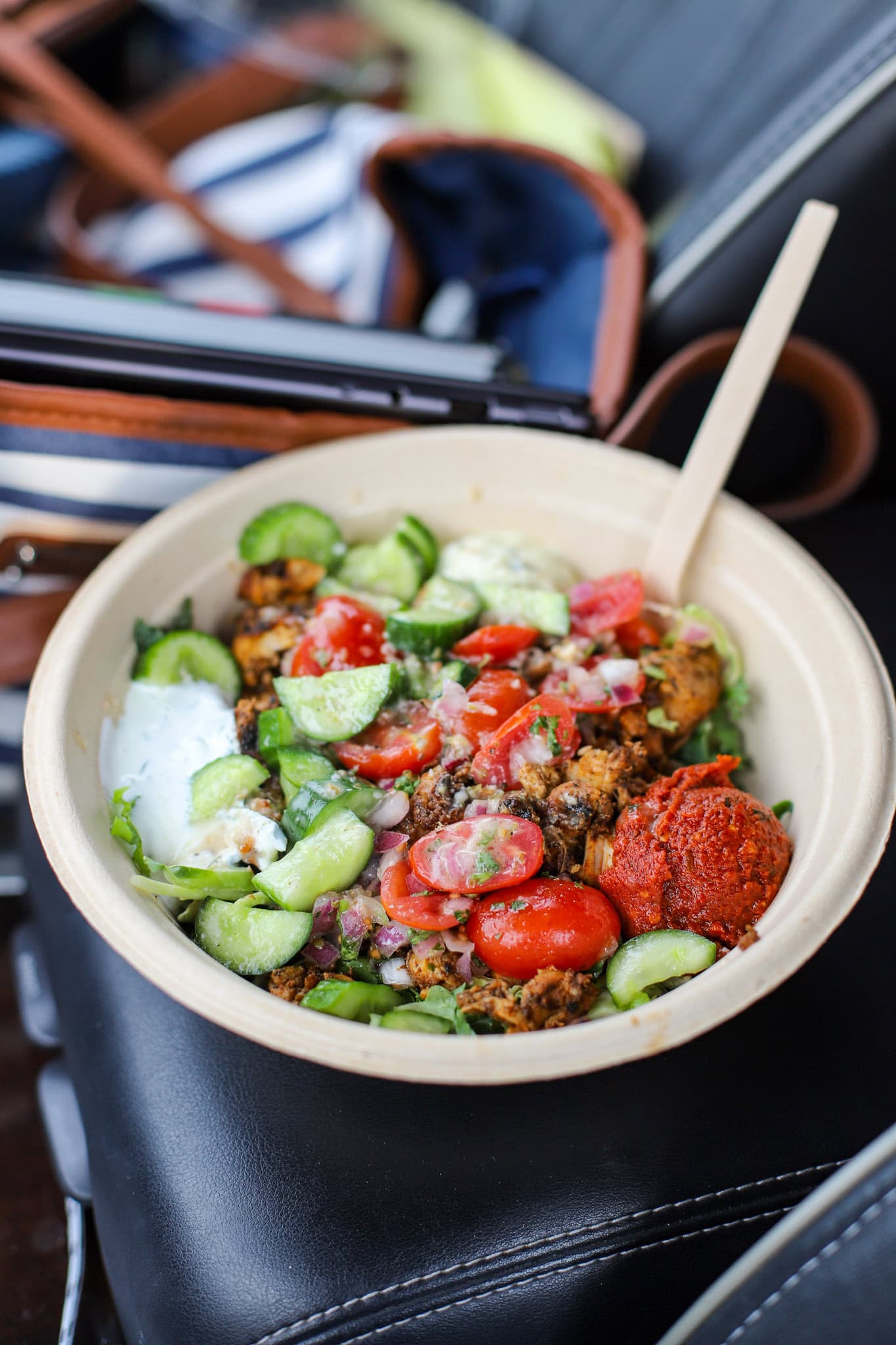
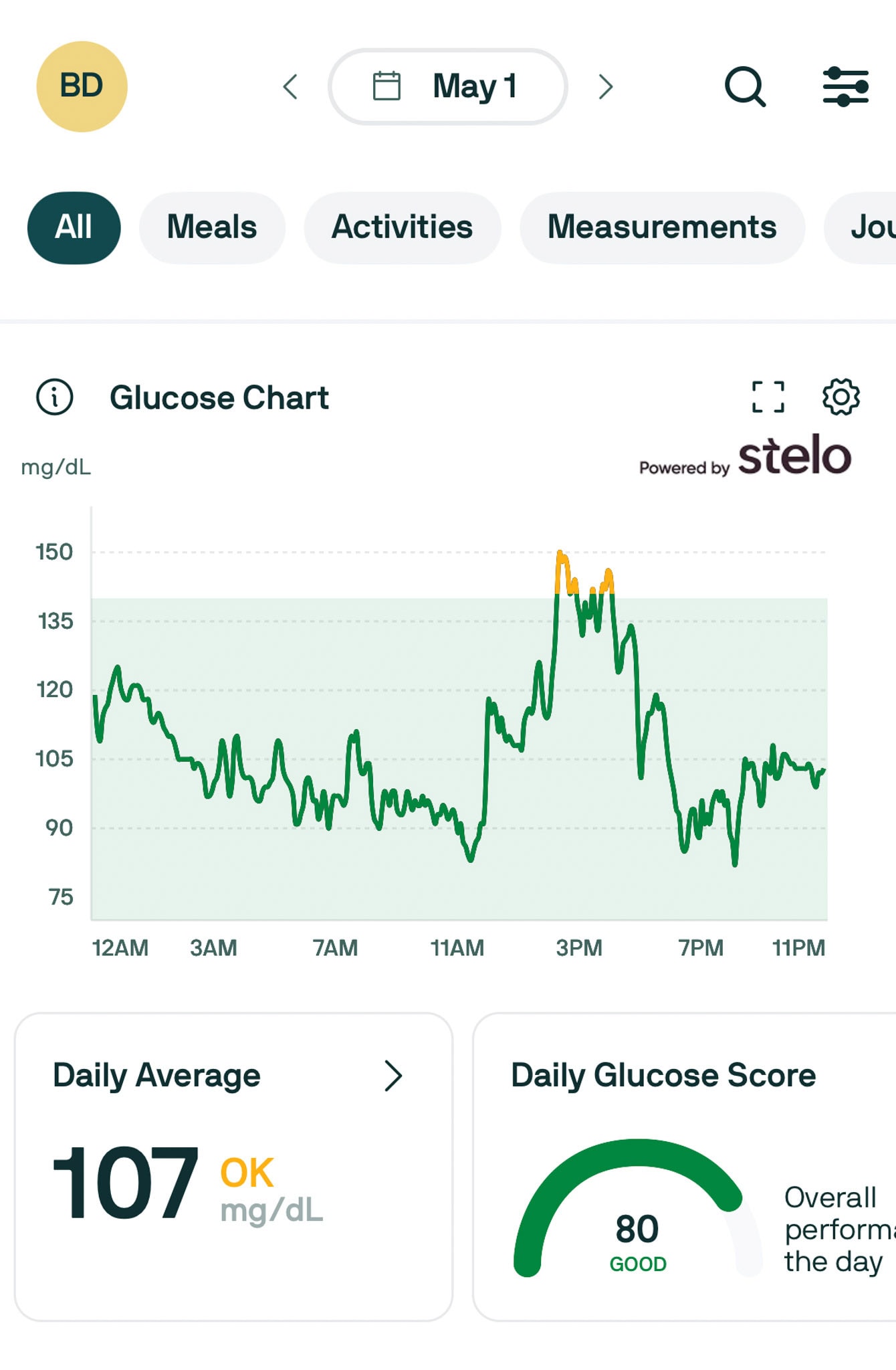

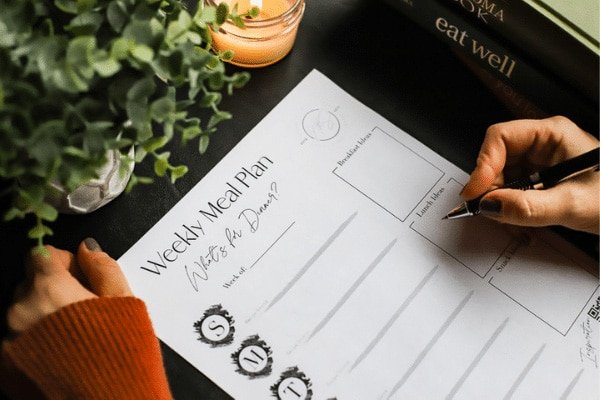
Laura says
Interesting data! I used to feel a pretty severe after lunch crash if I ate something carb heavy like pasta or pizza. I noticed after I started fasting (6 years ago!) the crashes went away. Then things changed again in my mid 40s and my focus now is a shorter fast (13- 14 hours), and a protein heavy breakfast and lunch, around 9:30 and 1:30. I feel like carbs are well tolerated at dinner, but adding in good protein and fiber helps keep me full until bedtime. I also started taking an OTC natural, bioidentical progesterone cream about 3 months ago. This has helped immensely with so many issues (insomnia, mood, energy), but I feel has also helped balance my appetite and blood sugar, and cravings. I find this stuff all pretty fascinating. I’m finishing up a non-degree graduate course right now for my new position “The Psychology of Food Making Decisions” and there is a lot of interesting research on food cravings, food cues, blood sugar, etc. I’ll be making a decision soon on picking a Masters program, and am highly considering Nutrition; Applied Nutrition.
Brittany Dixon says
A masters program!! How incredible. Applied Nutrition would be fascinating. That’s so exciting!
Also, which progesterone cream are you using? I was just talking to a friend of mine about this the other day. The week before my period I use Progessence Plus, a Young Living essential oil derived from wild yams that helps support progesterone production and I can tell it really helps with my sleep/mood.
Emily says
I know all people are different but wondering if you would be willing to share your general a1c results. My cgm results are very similar to yours but my A1c continues to border on pre-diabetes. Trying to figure that out! Have a functional med doctor appt soon to hopefully get some answers!
Brittany Dixon says
Happy to! 5.0% – this was at my latest Function Health lab draw earlier this year. However, in years past, it’s been 5.4%. I know I have a history of uncontrolled blood sugar so it’s a number I pay close attention to as well.
https://www.ahealthysliceoflife.com/function-health-review/